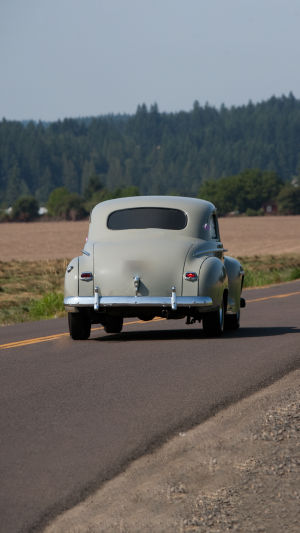The enduring allure of retro is not limited to the fashion world; it extends seamlessly into the automotive realm.
Within the extensive history of automobiles, a plethora of models boast retro styling, creating a trend that refuses to fade.
Despite the rapid advancements in automotive technology, manufacturers occasionally opt to deviate from the norm, drawing inspiration from the past to craft retro models that evoke nostalgia and cultivate devoted enthusiast followings.
Retro design, with its distinctive concepts, stands apart from the prevailing car designs of recent years, quickly winning the hearts of admirers. Whether one is enamored with retro cars or not, this stylistic approach has consistently threaded its way through the tapestry of automotive design history.
While new models typically emerge to reflect contemporary aesthetics and envision the future, retro models deliberately harken back to classic design themes. What distinguishes them is the intentional fusion of modern technology with retro design, creating a unique and unrepeatable concept.
The production of retro cars serves as a lens through which one can trace the evolution of life, aesthetics, cultural concepts, and technological advancements over the years. This deliberate nod to the past doesn't seek to turn back the clock but, rather, to encapsulate history within a contemporary context.
Retro cars become a canvas reflecting the multifaceted progress of people's production life, aesthetic preferences, cultural values, and technical prowess.
Within the current landscape of the automobile industry, retro models can be categorized into four main groups: those simply adorned with retro elements, those paying homage to tradition, 100% complete replicas, and replicas that seamlessly integrate new technology.
Shoichi Yamada, an interior designer with a passion for fishing and camping, exemplifies the love enthusiasts have for retro models. His affection for Volvo, synonymous with safety and ruggedness, led him to purchase and transform a Volvo 240 GL.
Changing the original burgundy exterior to a vibrant green, refurbishing the slightly outdated interior, and embracing the retro physical experience, Yamada's modifications breathed new life into the classic vehicle.
Despite being a bit underpowered, Yamada, an introverted and calm individual, found solace in the idea that weekends outdoors were about savoring life rather than racing, making the modifications just right for his preferences.
Transporting back to the 1930s and 1940s in Europe, the influence of streamlining permeated all aspects of design.
From lipsticks and water bottles to refrigerators, vacuum cleaners, cars, and airplanes, the concept of aerodynamics shaped an era. Streamlined cars, with their sleek designs, became a captivating symbol of that time, emerging from manufacturers such as Chrysler, Ford, Fiat, Citroen, and Volkswagen.
Retro automobiles, an enduring trend, bridge the past and present in the automotive world. Beyond mere design aesthetics, these vehicles encapsulate a nostalgia-laden narrative, weaving together history, culture, and technological evolution.
While modern car designs often seek futuristic visions, retro models intentionally revisit classic themes, presenting a fusion of timeless charm and cutting-edge technology.
The four distinct categories of retro models highlight the diverse approaches manufacturers take, catering to enthusiasts and capturing the essence of bygone eras.
Shoichi Yamada's Volvo transformation exemplifies the personal touch enthusiasts impart to their retro vehicles, turning them into tangible expressions of individuality and appreciation for automotive heritage.





